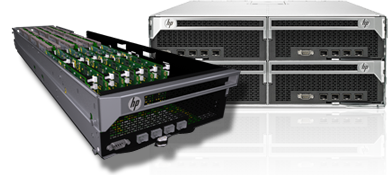At Intel Developers Forum (IDF) in Beijing Intel announced its new Centerton Atom SoC to combat the looming threat of ARM architectures in for cloud applications. HP, Dell and others have already announced plans to offer ARM-based server CPUs really targeting the cloud market. While some of STH’s readers may wonder why Intel is worrying about the chip designer best known for their mobile CPU wins, it actually makes a lot of sense. For shared web hosting and cloud providers, sometimes all one needs is a CPU core.
I often look at Amazon’s EC2 t1.micro instance where one gets a single core that yields around the same performance as 400MHz of Opteron 6128 speed. Each regular power version of the 6128 consumes 115w. So eight cores * 4 instances per core = 32 instances for 115w or about 3.59w/ t1.micro instance usage. Here though, 32 instances would share four memory channels. If one looks at cloud pricing, oftentimes memory is a key factor in pricing. Using less expensive CPUs would allow cloud players to either add a higher RAM/ core ratio or just add a ton of servers in a rack. Even with the new Ivy Bridge Xeons in microcloud configurations are not able to run the same number of servers at such low power consumption levels. One really great example of this is the HP Redstone Server Development Platform packing 2,800 servers in a single rack. Whereas ARM is still working on bringing out their 64-bit architecture and having applications optimized, one can bet that common LAMP (Linux, Apache, MySQL and PHP) installations will be at the forefront of this development alongside specialized high frequency trading and other high-end applications.

The new Centerton SoC is said to consume 6w which is an important figure since ARM is shooting for a per-server platform target around 5w. Although there is a ton of development money behind ARM, x86 architectures are the incumbent so Intel being just good enough will make the ARM switching costs expensive for many organizations. AMD’s $344m acquisition of SeaMicro was seen as a move where AMD was aggressively pushing into the microcloud platform market. Intel’s Centerton SoC is its next-gen architecture for the market so that other vendors can make similar products.
The other player probably looking at this development is Cisco. Moving 2,800 servers into a single rack usually means there is a high speed switching backplane in play. Many in the industry see these high-density servers with switching backplanes as a way to reduce interconnect costs and complexity as one needs fewer switches and cables to connect all of the servers.




I believe that the HP Redstone is 288 CPUs (servers) per 4U, a total of 2,880 servers per rack. Your original text could be read to say 2,800 modules per 4U, not per rack.
Even better, I believe that these will eventually be quad core modules for a total of more than 11,500 cores per rack! At the low-low Amazon price of $.02 per hour per micro server, that’s $178K per month per rack of IAAS revenue assuming an unrealistic 100% average occupancy.
Thanks! I need to write less when I’m tired.